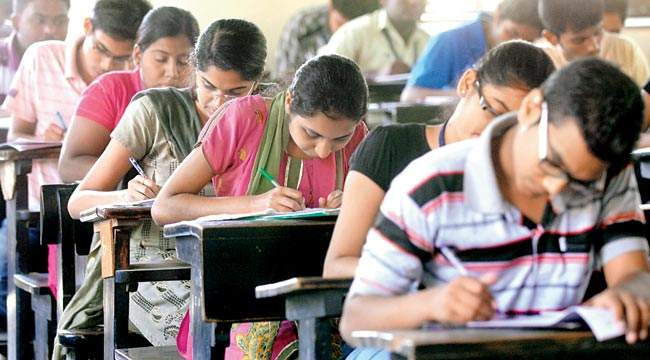AP ICET Last year section wise Paper Analysis
AP ICET is undoubtedly a platform where a large number of candidates are allowed to showcase their talents. This is a fact that the difficulty level of this particular examination is high but that does not reduce the number of applicants and with the course of time, it has turned out to be an extremely competitive one. Aspirants need to prepare hard to secure good marks in AP ICET and if we analyze the previous year’s trends, it can be concluded that the difficulty level of Mathematical Ability, as well as Analytical Ability, was slightly higher.
If a candidate wants to secure satisfactory marks in this examination, it is mandatory for him or her to analyze and concentrate on the question pattern which was followed in the last years. This is because one can judge the difficulty level of the various sections and they can also realize which of the sections are time-consuming, this will ultimately help them to manage their time during the examination. AP ICET has no policy of negative marking, however, this increases the level of competition so, one should not take his or her preparation casually.
Analysis from AP ICET 2017:
If we consider the question pattern throughout all these years, it can be understood that basic three sections are included in the syllabus which are Analytical Ability, Mathematical Ability, and Communication Ability. In this online exam, certain sections were tough while the other sections were moderately tough, therefore it is necessary to analyze the different sections so that we can understand the approximate cutoff marks for the examination. One can refer to the following information to relate to the section-wise analysis of Andhra Pradesh ICET:
Analytical Ability:
If we analyze this particular section, one can understand the questions of this section ranged from moderate to difficult. A total number of 75 questions were given from this section which was time-consuming as well as tricky. The questions of this section can be divided into two more sections which are analyzed below in details:
- Data Sufficiency:
Almost 20 questions were asked from this portion and according to resources, the questions related to numbers were given abundantly but there was no question which was related to reasoning. The other questions were based on Coordinate Geometry, Profit and Loss, Mensuration, Surds, Geometry and much more. So, it is obvious that one needs to practice these topics to ensure good marks in this section.
- Data Analysis:
The questions which were asked from this portion were less complicated and did not require much intellect to answer these questions correctly. A majority of the questions were based on pie chart as well as a table. There was one typical question in which the candidates had to draw a Venn diagram through which they could solve the problem.
- Reasoning:
In this portion, the questions were moderately difficult. The majority of questions were asked from Coding-Decoding which included two types of questions from the set and some particular questions. Other questions were based on problem solving, date, time and arrangement.
Apart from this, the other questions were mostly asked from blood relations, clocks, symbols, and notations. So, one can understand that these questions were not extremely tough or time-consuming but they required the application of basic concepts.
Mathematical Ability:
Among the total 35 questions in this section, most of the questions were application-based in which the candidates had to make out from which concept they will derive the solution of the problem. According to resources, the examinees faced a lot of difficulties in this section as the questions were tough as well as time-consuming in nature.
According to the feedback received, it was quite clear that the candidates had to solve the given questions and in order to do that they had to implement some complex concepts. For example, in pure Mathematics section, two new type of questions were being asked, indeed it was difficult for most of the candidates to find out the SD of discrete series as well as a Quadratic equation.
Only a few student-friendly questions were there which required the mere substitution of the values while the majority were being asked from topics such as Ratio and Proportions, Number System, Profit & Loss, Time & Work, Algebra, Progression, Binomial Theorem, Trigonometry, Simple and Quadratic Equations.
Communication Ability:
English is one of the most compulsory sections in almost every entrance examination and one should not ignore this particular domain. For example, almost 50 questions were solely asked from this portion in AP ICET in the last year. The pattern of these questions can be subdivided into furthermore basic sections which are described in details:
- Vocabulary:
Vocabulary can be an intriguing part if one is not in regular touch with it. The six questions which were asked from this section were mainly based on Fill in the blanks and Substitution of words.
- Functional Grammar:
There were 15 questions on Grammar which were asked in this section. The pattern of questions included the choosing of the correct form of the verb or preposition which were not difficult and was easy to solve.
- Reading Comprehension:
A passage of 200-300 words was given from this section and from this passage, 15 questions were asked. The section was easy to solve for most of the examinees.
It is a well-known fact that the cutoff marks of any entrance examination directly depend upon the difficulty level of the exam. Based on that fact, it can be concluded that the cutoff marks of AP ICET are approximately 25% of the total marks, this is due to the high difficulty level of the questions in Mathematical Ability as well as Analytical Ability sections. Thus, it is better for the upcoming candidates to prepare well for these sections from now on so that they can easily solve the difficult questions which may arise from these sections.










Discussion about this post